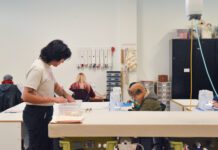Thursday, Oct. 18
There’s no doubt about it: Oklahoma is horse country, and when there’s a horse show in town, just try keeping it a secret. The U.S. National Arabian and Half-Arabian Championship Horse Show opens Thursday at Expo Square, 4145 E. 21st St., Tulsa, with many of the competitions starting at 8 a.m. Friday. This line-up of the world's best Arabian, half-Arabian and Anglo-Arabian horses includes contests in all categories of riding, futurity and driving. The show also welcomes trainer Sylvia Zerbini (Cavalia) and her herd in special performances of Grand Liberte, Oct. 25-27, at Expo Square’s Ford Truck Arena. Want more? More than 100 vendors in all-things-equine will also be on hand at the Exchange Center from 10 a.m.-8 p.m. daily. There will also be show tours for families, workshops and riding classes. The horse show runs through Oct. 27. For more on this prestigious event, follow the links at www.exposquare.com.






















